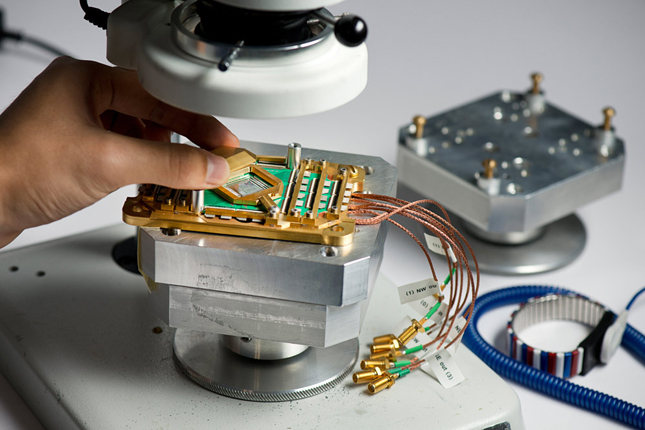05 May 2015
Cambridge Quantum Computing Limited (CQCL) claims to have developed what is thought to be the first operating system designed for quantum computers. The company describes its OS – given the name t|ket> – as “a unique quantum computing operating system”, which was built on a proprietary custom designed high speed supercomputer, also built by CQCL, in order to simulate a quantum processor.

D-Wave claims to have developed and sold the world’s first quantum computer systems.
The development of quantum computing has significant consequences for all aspects of modern society, from security and defence, through energy and infrastructure, to everyday life.
Quantum computers would transform the way everything is done, mainly because they would be far more powerful and much faster than conventional binary-based computers. Perhaps conventional computing could be thought of as two-dimensional, whereas quantum computing is three-dimensional. And despite claims of breakthroughs and developments, no company or individual has yet developed a fully operational quantum computer.
The challenges of building a quantum computer includes the problem of being able to precisely manipulate single atoms on chips. Scientists have made progress in this area, but no-one has conclusively resolved the problem.
The instability of atoms and the consequent inability to control them is one of the reasons for another of the challenges – quantum error correction, which tries to mitigate for the unpredictable behaviour of atoms.
IBM says it has made a breakthrough in quantum error correction, claiming it has developed a new technique to detect and measure quantum errors. The company also says it has developed a new, square quantum bit circuit that is “the only physical architecture that could successfully scale to larger dimensions”.
D-Wave Systems, a company which claims to have already developed quantum computer chips, has just sold what it says is the world’s first commercially available quantum computer, to defence company Lockheed Martin.
D-Wave has previously sold its ultra-high-end quantum computers – for at least $10 million per 128-cubit D-Wave One system – to NASA, Universities Space Research Association, and Google. The latest D-Wave Two contains 439 quantum bits. The main OS is said to have been written in LISP.
Some scientists questioned whether D-Wave Systems technology can be classified as true quantum computers, but this has not stopped Google from announcing that it will base its own development of a quantum computer on D-Wave technology.
One of the search giant’s business units is called the Google Quantum Artificial Intelligence, and last month, in an article in Nature, it claimed to have found a way to make quantum computers more stable and better able to to find and fix errors.
Meanwhile, the world’s largest chip company Intel several years ago released what it called the Intel Dual Core Quantum Processors Version 3.16, which the company says “uses quantum technology”.
Intel has always been somewhat secretive, and famously “paranoid” about its research, but a spokeswoman for the company, Anna Cheng, says the company always has an eye on the future.
“We employ a team of Futurists that look 10+ years down the line, a far look in terms of the technology industry. A lot of their work is looking at pain points and what it would take for technology to resolve them,” says Cheng.










